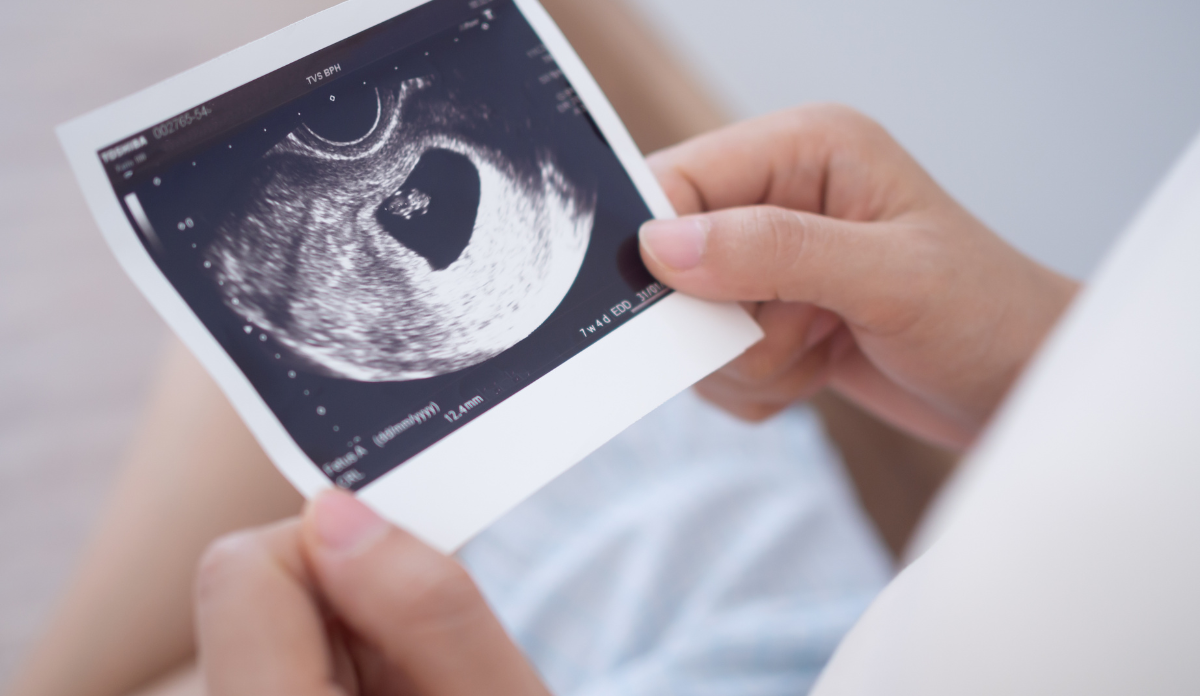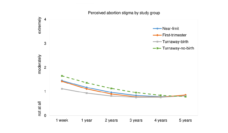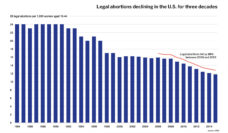Despite the recent election wins protecting abortion access in Ohio, Kentucky, and Virginia, abortion restrictions continue to cause grief and sow chaos across the country. In 2022, following Texas’s six-week abortion ban, 227 more infants died than in 2021. The spike represented an 11.5% increase in infant deaths compared to 2021, reversing the previously declining trend in the state’s infant mortality rate.
For public health officials, infant mortality represents not only heartbreaking losses for families but is also an indicator of a country’s overall health. Infant mortality can shed light on problems like limited health care access, income inequality, and deficient vaccine coverage. The U.S. trails other high-income countries in infant health, with an infant mortality rate of 5.7 deaths per 1,000 live births in 2021. Countries like Japan, Finland, Italy, and others report much lower rates, around 2 per 1,000 live births.
Kendall Burdick and colleagues investigated whether states with more restrictive abortion access experienced higher rates of infant mortality. They analyzed county-level birth and infant mortality data from the National Center for Health Statistics between 2014 and 2018, alongside historical and current data from the Guttmacher Institute on the number of abortion restriction laws in each state.
Abortion restrictions in the U.S. can take several forms. They include laws that specify how, when, and if abortions can be performed. This encompasses laws requiring doctors to undergo intense licensing processes, enforcing waiting periods for patients, and mandating that patients receive counseling with state-specified information. Some states only allow abortions under certain circumstances, like threats to the patient’s physical health, partial births, rape, or incest. In most states where abortion is legal, health care providers or institutions can also refuse to conduct abortions.
Counties were categorized into six restriction categories from the least restrictive (1-5 restriction laws) to the most restrictive (11-12 restriction laws). States with at least eight restrictive abortion laws had more infant deaths than those with fewer restriction laws. When comparing states with the most restrictive laws to those with the fewest, counties in the most restrictive states had a 16% higher infant mortality rate.
The state’s increase in infant deaths demonstrates that increasing restrictions on abortion are having wider effects on pregnant people beyond those who might have sought abortion.
The restriction landscape in this study predates the Supreme Court’s Dobbs v. Jackson decision, which overturned Roe v. Wade and the constitutional right to abortion. After the 2022 decision, the U.S. became an even more divided patchwork of abortion restrictions. Some states like Minnesota and Illinois strengthened abortion protections in the wake of Dobbs, and abortion rights advocates won major victories in November’s election. However, many more states took the opportunity to put in place new restrictions. Texas, which escalated its six-week abortion ban to a total ban, joined the ranks of 14 states that effectively ended the provision of the procedure.
Almost 10,000 more births occurred in Texas the year after the state’s abortion ban. Doctors in Texas and elsewhere are struggling to deal with the increase in demand because many obstetricians and gynecologists (OB-GYNs) are moving away to more liberal states, creating “OB-GYN deserts.” About 300 labor and delivery units have closed their doors in the past five years and closures are increasing because of the recent onslaught of abortion restrictions. The widespread lack of clinics and doctors is creating a scarcity of prenatal care for infants and parents, even those who do not need or want abortion care.
Texas likely saw more infant deaths in 2022 than in previous years because its abortion restrictions are impeding access to necessary prenatal care and forcing many to carry unviable pregnancies to term, an experience one woman described as “torture.” The state’s increase in infant deaths demonstrates that increasing restrictions on abortion are having wider effects on pregnant people beyond those who might have sought abortion.
Photo via Getty Images














